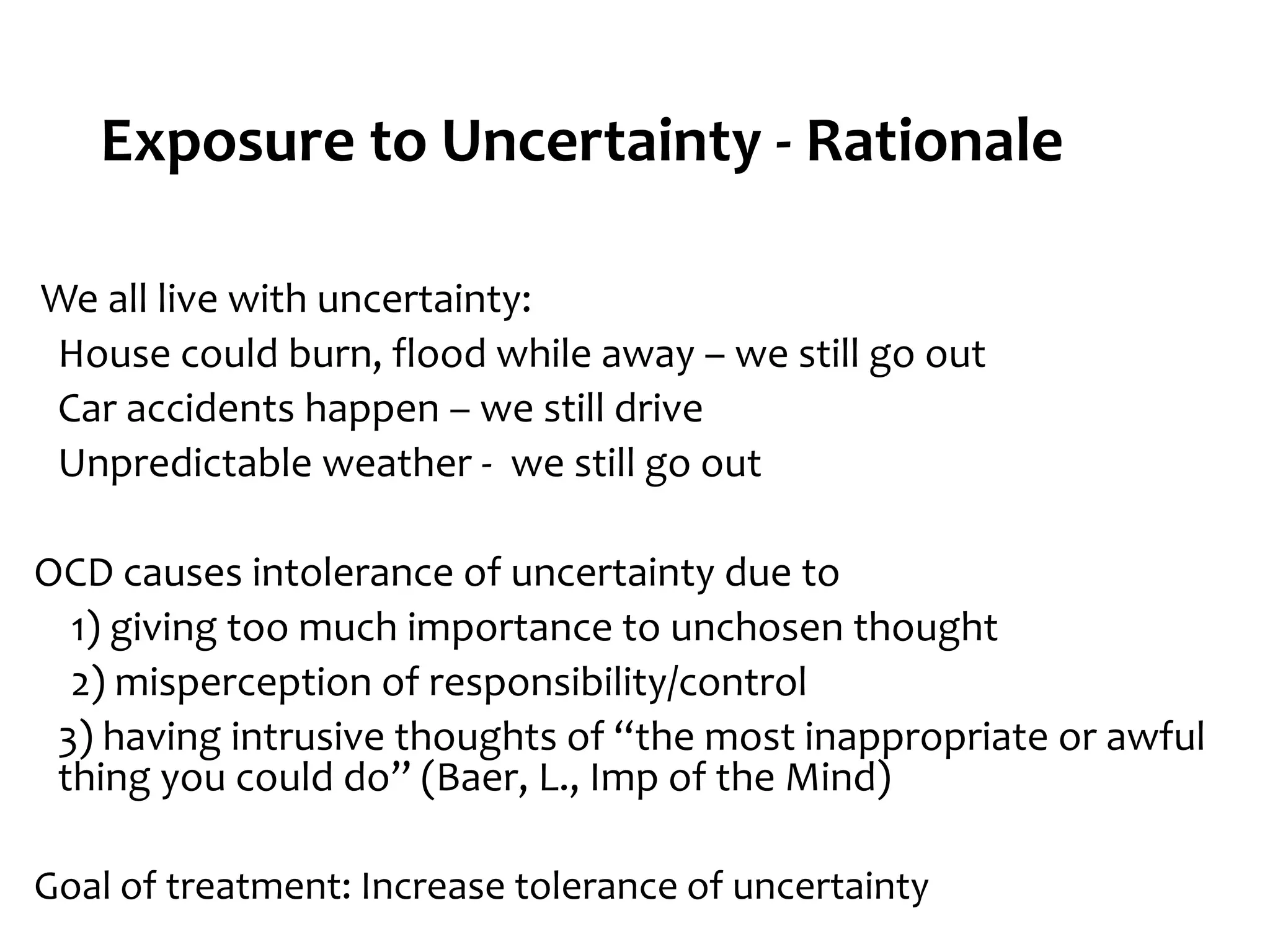CBT and ACT approaches are used to treat OCD characterized by intrusive thoughts. CBT utilizes exposure and response prevention (ERP) by creating hierarchies of triggers to facilitate habituation of anxiety through repeated, prolonged exposure. ACT incorporates mindfulness, acceptance, defusion, values, and committed action to increase psychological flexibility rather than experiential avoidance. Both approaches aim to reduce compulsions and distress from intrusive thoughts, but CBT focuses more on thought content and anxiety reduction while ACT emphasizes the context of thoughts and movement toward valued actions.





















































